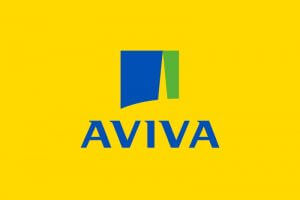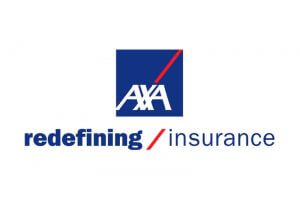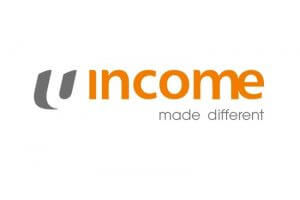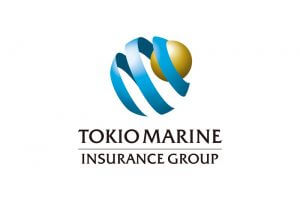
What other benefits does an annuity policy or a retirement plan provide besides an income stream? Do your long-term financial plans allow you to have a secure and meaningful lifestyle when you reach your desired retirement age?
According to the latest Investor Watch survey by UBS, 9 out of 10 investors are making changes to their finances due to increasing life expectancy. Most are expected to make changes by adjusting their spending habits and taking a broader view of long-term wealth allocation.
From the same report, 97% of Singaporeans are looking or already made financial changes in view of an increased life expectancy.
Read also: Financial planning for your health and insurance coverages
Why let your lifestyle be compromised, when your decided to stop working?
This guide covers the following about retirement planning in order of appearance. Feel free to jump directly to the section that interest you.
Contents of Retirement Planning Guide
- Overall view on retirement planning
- How can CPF LIFE supplements your retirement income
- What is the purpose of a retirement plan?
- Do you really need a retirement plan?
- Benefits and risks of a retirement plan
- What are the types of retirement plans available to you?
- What are the best retirement plans among the available categories?
- How does a retirement plan compares to other investment options?
- Find out more about retirement plans!
Should you have any questions not covered by the above, we will get back to you when you drop us a message.
Overall view on retirement planning
Studies by the World Health Organisation (WHO), has placed the average life expectancy of a Singaporean at 83.1 years¹. In fact, Singaporeans live longer than most other nationalities and in full health.
While health is the greatest wealth, no doubt having additional material wealth would enhance your lifestyle. Who wouldn’t agree that enjoying your desired retirement requires both health and wealth?
This is where retirement planning comes in place to ensure that your finances can last you for all your intended purposes when you are retired. When structured according to your financial goals and objective, a retirement plan can provide a combination of income, principal liquidity, long-term care, and wealth accumulation.
Take charge of your health and let a retirement plan take care of your finances.
With all its benefits, an annuity is not a guaranteed fail-safe towards all the financial issues you may encounter after your retirement (Risk and benefits in later sections).
Read about: When should you start saving for your retirement?
Read about: 3 things to consider before taking up a new financial product
How to prepare your financials for life after retirement?
Assuming you wish to stop working at age 60, you would have to ensure you can fund your desired retirement lifestyle until your demise. As a general guide, it would be reasonable to minimally cater funds for 25 years with inflation accounted for.
Suppose your current annual lifestyle expenses is $30,000, you will require $750,000 over the course of your retirement from age 60 to age 85. And we have not even cater for inflation!
Ensuring that your finances will last exactly til the age of 85 is by no means a wise choice either. The average life expectancy may not be a fully accurate indication of the age of your demise. You may still very well be alive beyond your late 80s, without being financially prepared for what comes next.
Now suppose you set a specific age that you wish to retire at, do you have a reasonable answer to the following?
Questioning your financial situation based on the following:
- Are you accumulating wealth at a stable and reasonable rate of returns?
- Are you sure that your accumulated wealth can provide sufficient payout through your retirement years?
- Can you ensure your future retirement income will not be disrupted if you are strike down with a medical condition as you save towards your retirement?
- How much are you setting aside for additional expenses if you are physically disabled during your retirement?
Are you getting sufficient yield on your savings to fund your lifestyle expenses when you stop working?
Read about: Effects of compounding returns on your savings
How are you currently accumulating your wealth for retirement?
The way you are accumulating your wealth affects the rate of returns you can potentially achieve on your funds. Efficient management of your finances would allow you to generate higher returns, allowing for earlier retirement.

At this moment, are you
- Setting a number of years to accumulate and compound your funds while you are still working?
- Constantly accumulate funds until you decided to quit working and retire?
- Have no fixed wealth accumulation target, saving as and when there are excess funds?
If you are accumulating your wealth via the first 2 option
A financial commitment can be set based on your budget you are willing to set aside. Alternatively, a budget can be determined based on the amount of income you are looking to receive during your retirement.
In return for your disciplined approach, you can expect a certain guaranteed rate of returns and/or a constant rate of payout at the age you choose to start receiving an income.
If you are accumulating your wealth via the last option
For the last option, as there is no fixed commitment or budget set aside, the accumulation would be generating minimal or negative growth until the reality of retirement sets in. The allocation or portioning of the final sum of savings will be entirely based on the absolute sum of funds saved.
For the ease of saving as and when you like, there will be lesser financial returns due to low compounding on the funds set aside. Consider starting off with a habit of committing a small but regular sum every single month.
How can CPF LIFE supplements your retirement income?
The CPF LIFE Scheme was introduced in 2009 to provides a monthly income for as long as you live. For Singapore Citizen or Permanent Resident born in 1958 or after, CPF LIFE is compulsory.
When you reach the age of 55, Your CPFOA and CPFSA will be transferred to your Retirement Account to form your retirement sum. The amount to be set aside from your CPFOA and CPFSA will be adjusted upwards yearly by CPF Board to cater for inflation.
Assuming you are Age 55 as of 2018, you would need to set aside $171,000 under the Full Retirement Sum (FRS) to your Retirement Account before you can do any cash out from your CPFOA and CPFSA.
The funds being set aside will then entitle you to receive a lifetime of income payout from CPF LIFE.
How much from your CPF account do you have to set aside for CPF LIFE?
The sum to be set aside towards your CPF LIFE are made known to you ahead of time and may increase to cater for long-term inflation. Currently, the Basic Retirement Sum (BRS) will be increased by 3% from the previous year amount, for those turning 55 from 2017 to 2023.
The remaining cash balances in your Ordinary and Special Accounts can be withdrawn or accumulated in your CPF account for an attractive interest rate.
If you are turning 55 in 2018, your retirement sums are set at
- Basic Retirement Sum (BRS)* – $85,500
- Full Retirement Sum (FRS) – $171,000
- Enhanced Retirement Sum (ERS) – $256,500
Note: FRS and ERS are set at two times and three times of the Basic Retirement Sum (BRS).
*The BRS is only valid with a sufficient CPF property charge/pledge, failing which a Full Retirement Sum (FRS) has to be set aside. Alternatively, you may even set aside a higher amount for CPF LIFE under the Enhanced Retirement Sum (ERS).
What are the available schemes under CPF LIFE?
With the Escalating plan introduced in January 2018, there are now three CPF LIFE plans to choose, depending on how you wish to receive your monthly payout. The Standard Plan, Basic Plan, and Escalating Plan each have their own payout amount and options based on the same amount set aside for CPF LIFE.
Note: For users on mobile devices, you may have to swipe/ scroll on the chart to view the complete data.
| Your lifetime payout starting from Age 65 onwards |
|||
| Retirement Account (Based on age 55 at 2018) | Standard Plan More for self, higher level payout (Default) | Basic Plan More for family, lower level payout | Escalating Plan More for future, lower but increasing payout |
| Basic Retirement Sum (BRS) $85,500 | $720 - $770 | $680 - $700 | $550 - $610 (Payouts increase by 2% every year) |
| Full Retirement Sum (FRS) $171,000 | $1,320 - $1,410 | $1,240 - $1,290 | $1,010 - $1,110 (Payouts increase by 2% every year) |
| Enhanced Retirement Sum (ERS) $256,500 | $1,910 - $2,060 | $1,810 - $1,870 | $1,470 - $1,620 (Payouts increase by 2% every year) |
| Remarks: Any unused amount left in your CPF LIFE/ Retirement Account minus the payout you received, will be bequest to your beneficiary upon your death. |
|||
Is CPF LIFE payouts sufficient to cover all your lifestyle expenses?
With the Standard plan scheme that allows the highest initial monthly payout, you would be receiving $1,320 ~ $1,410 monthly for the rest of your life starting from Age 65.
Now working backwards, the higher estimate on the future value of $1,410 would be worth the present value of $1,000 to an individual age 55 based on inflation at 3.5% p.a.
The real purchasing value of $1,410 at Age 65 for an individual currently age 55
- Utilities – $150/ $211
- Telecommunication – $50/ $71
- Daily meals ($20 x 30 days) – $600/ $846
- Other basic needs (transport, clothing, daily household, etc) – $200/ $282
- Total cost of the above – S$1,000 (Now)/ S$1,410 (10 years later)
As seen above, the purchasing power of $1,000 will be translated into a figure of $1,410 in 10 years time. Sure, it can cover your basic daily needs, but will it be enough for your non-essential lifestyle needs?
Read about: 5 other ways you can use your CPF Funds
What is the purpose of a retirement plan?
Simply put, the main objective of an annuity or retirement plan is to provide an income payout to supplement your desired retirement lifestyle. Depending on your personal lifestyle goals and objectives, a retirement can be structured to provide for the following
Multiple income payouts options such as:
- Single lump sum upon reaching your retirement age
- Monthly or yearly payout for a specific number of years
- Monthly or yearly payout for a lifetime
Product specific features such as:
- Additional non-guaranteed monthly or yearly income
- Partial lump sum bonus upon reaching the start of the retirement age
- Increased income in the event of disability
- Additional lump sum bonus upon reaching the end of the retirement payout period
*The features above does not represent the full features and benefits found in each individual retirement plan across all insurance company. Product specific features and benefits will be discussed in later sections.
Read about: Brief introduction to retirement plans and annuities
Now then, suppose you agree that a retirement plan can add financial benefits to you as your income declines after your retirement.
What happens when you outlive or meet your demise before the maturity of your retirement plan?
You pass away before the retirement payout ends
If your demise happens before the said age, you will lose out on the promised payout you could have potentially continue to receive. An unfortunate event but nevertheless, the plan meets your objective of providing you with your desired income payout until your final days.
Hey, what happens to the promised future income?
What happens to the payout when you meet your demise?
You would have passed on a lump sum for your beneficiaries based on the death benefit of your retirement plan. Your spouse or children may benefit with the financial relief from the stated death value payout in your retirement plan.
You outlive your retirement payout
You underestimated your longevity and now you have to pay the price of bad financial management. Social and public support may assist with the essentials of daily living.
Why does social support only provides for basic needs of living you ask?
Let put it this way, your level of comfort and benefits should not be above those that have carefully planned for their retirement cash flow and expenses.
How can you solve the issue of outliving your retirement plan?
Few would complain about living a long life when in possession of both health and wealth. Here is what you could have done on ensuring your income stream does not end before you do.
- Set a longer payout period on your retirement plan, if you only plan on having one
- Have some of your retirement plan set to payout for a longer number of years
- Take up a retirement plan with a lump sum maturity payout at the end the payout period
- Opt for a lifetime retirement plan at the cost of a lower monthly payout
In either case of your demise or outliving your retirement plan, wouldn’t you be glad of the financial certainty it has provided to you along the way?
Do you really need a retirement plan?
Your CPF LIFE payout will supplement your income during your retirement. While the payout is expected to assist with your basic living needs, it will not be realistic to expect CPF Life to provide a high level of comfort for your retirement.
Exactly what are the different types of retirement plans and how do they add value towards your retirement planning? Are there additional benefits that can enhance its purposes of just providing an income during your retirement?
Based on your current financial standing, how confident are you towards achieving your retirement funds?
Do you really need to save up a million for retirement?
Most financial sites and blogs would refer to the approximate figure of minimally a million when it comes to preparing for your retirement. Our editors and contributors generally disagree that you need a huge lump sum right upon retirement.
These are consensus we came up with
- An individual is unlikely to need a million dollar immediately upon retirement
- An individual is likely to need an income stream totalling a million dollar or more throughout their retirement years
- It is more realistic to make plans for an income stream upwards of a million dollar compared to achieving a million dollar upon retirement age
There is no doubt that a significant sum of savings upon reaching your retirement will enhance your initial lifestyle but it serves as more of a want than a need.
How do you determine if you need a retirement plan
It is unlikely that based on your current standard of living, life after your retirement is only about survival. Unless you are scheduled to receive a lump sum or have other forms of recurring income, CPF LIFE is unlikely to provide more than fulfilling basic life needs.
Consider the following question about your retirement lifestyle and income:
- Are you looking to still have a high and stable income despite a lower workload as you ages?
- Are you still preparing your financials to sustain your lifestyle when you stop working?
- Are you seeking to accumulate wealth to draw upon when you retire?
- Is maintaining a specific lifestyle important even as daily costs go up?
- Does your ideal retirement lifestyle involve discretionary spending such as frequent overseas travelling?
A retirement plan to cater to the above, when structured to meet the changing needs when your income level declines with your workload.
How are our licensed financial advisers planning for their retirement?
We spoke to two of our site contributors on their retirement plans and how much they are looking to achieve by the time of their retirement.
Which of the profile below best matches you and how much does your retirement planning differs from them?
Aggressive profile, high lifestyle expenses
Kelvin Tan is a site contributor focusing mainly on wealth, investment and financial planning related contents on Interestguru.sg. He expects himself to completely stop working no later than age 65 with an income drawdown from annuities and dividend yielding unit trust funds.
Kelvin prefers a retirement lifestyle where he can spend on non-essential personal good and services. He has planned for his income stream to last until age 85 for a period of 20 years. His expected yearly expenses after retirement, based on current value.
- 2 long haul overseas trips: $10,000/ year
- 2 short haul overseas trip: $2,500/ year
- Other lifestyle expenses ($500/ month for personal expenses): $6,000/ year
- Discretionary expenses (Digital gadgets, dining, luxury purchases, and others): $5,000/ year
- Long-term health care and medical expenses: NOT INCLUDED
Kelvin plans to cater for increased cost due to inflation from Age 65 to 85 by drawing down the principal sum in his investment portfolio.
Additional yearly income required after CPF LIFE: $23,500 (Present value), ~$60,000 (Inflation at 3%)
Total expenses from Age 65 to 85:: $470,0000 (Present value), ~$1.2 mil (Inflation at 3%)
Kelvin plans to achieve his retirement goals via a combination of dividend-yielding Unit Trust funds and Annuities policies. Based on his current financial budget, he plans to achieve this by:
Investments
Lump sum wealth accumulation via unit trust funds to Age 65: S$300,000
Assuming an average dividend yield at 6%, he expects to receive $18,000 yearly or $360,000 from the lump sum investment til age 85. With minimal drawdown from his capital investment, he sets a buffer for other long-term healthcare and medical needs by only using his capital investment for emergencies purposes.
He catered a worst case scenario of his capital investment depreciating at 3% annually from Age 65 to 85.
- Total dividend yield to age 85: $360,000
- Capital investment at age 85: ~$160,000 (3% capital deprecation)
- Total expected value of dividend and capital investment (with capital deprecation to age 85): $520,000
- Total expected value of dividend and capital investment (without capital deprecation to age 85): $660,000
Annuities and retirement plans
Yearly premium at $25,000 for a retirement plan before age 40 (Payable for 10 years): $250,000
Assuming the worse case scenario of starting his retirement plan at age 40, he would have accumulated $250,000 in his retirement plan at age 50.
From age 65 to age 85, he is expected to receive up to $37,000 yearly, of which $24,000 is guaranteed.
- Guaranteed income to age 85: $480,000
- Non-guaranteed income to age 85: $264,000
- Total projected income to age 85: $744,000
Kelvin is expected to generate the following from his financial portolio:
- Investment: $18,000
- Annuities: $37,000
- Total income from investment and retirement plans: $55,000
With just a financial commitment of $25,000 yearly for 10 years anytime before the age of 40 and a separate total lump sum wealth accumulation of $300,000 by age 65, Kelvin is likely to retire according to his desired lifestyle.
His expected income stream of $55,000 is not far off from his actual yearly requirement of $60,000 for his retirement lifestyle.
Kelvin expects to make up for the shortfall with other endowment plans and saving products that are scheduled to mature during his retirement years.
Wish to implement this retirement plan?
Drop us a message and let us work out based on your current profile and financial portfolio.
Conservative, low lifestyle expenses
Chloe Ng is a site contributor focusing mainly on health and protection related contents on Interestguru.sg. She wishes to retire early and expects to completely stop working no later than age 60.
Chloe prefers a simple retirement lifestyle with minimal non-essential spending. She has planned for her income stream to last until age 90 for a period of 30 years.
Chloe expected yearly expenses after retirement, based on current value. Inflation is not factored in at this point in time.
- Cost of daily livings: CPF LIFE (Assume fully covered by CPF LIFE)
- 1 long haul overseas trips: $2,500/ year
- 2 short haul overseas trip: $2,500/ year
- Other lifestyle expenses ($250/ month for personal expenses): $3,000/ year
- Discretionary expenses (Digital gadgets, dining, personal maintenance, and others): $3,000/ year
- Long-term health care and medical expenses: $1,000/ year
Additional yearly income required after CPF LIFE: $12,000 (Present value), $28,000 (Inflation at 3%)
Chloe prefers an income stream that is guaranteed to keep up with inflation.
Chloe plans to achieve her retirement goals via an inflation proof annuity plan. Based on her risk profile and current financial budget, she plans to achieve this by
Annuities and retirement plans
Monthly premium at $2,000 for a retirement plan before age 35 (Payable for 20 years): $500,000
Assuming the worse case scenario of starting her retirement plan at age 35, Chloe would have accumulated $500,000 in her retirement plan at age 55.
Starting from age 60 onwards, she is guaranteed to receive an income of $30,000. Her income is further guaranteed to increase at a rate of 3.5% p.a to keep up with inflation. Her final income payout at age 80 is guaranteed at $57,000.
- Guaranteed income to age 80: $848,000
- Additional non-guaranteed lump sum payout at the end of age 80: ~$630,000
- Total projected returns by the end of age 80: $1.47 mil
With just a financial commitment of $2,000 monthly for 20 years anytime before the age of 35, Chloe is set to retire at the age of 60. Even if inflation goes up by 3.5% p.a, her purchasing power is not reduced as her income is guaranteed to increase at the same rate.
Upon reaching age 81, Chloe expects to draw down from the additional non-guaranteed lump sum of $630,000 to last until age 90.
Chloe can also surrender her whole life insurance policy or lifetime endowment plan should there be any shortfall in the non-guaranteed lump sum payout from the retirement plan.
Wish to implement this retirement plan?
Drop us a message and let us work out based on your current profile and financial portfolio.
Benefits and risks of a retirement plan
The is no free lunch in this world. Similarly, it is impossible to make a claim of extraordinary high financial returns with minimal risk.
It is necessary to understand that a trade-off occurs with every financial decision made.
- If you seek absolute liquidity and principal guaranteed features, you are certain to suffer a loss of purchasing power over a period of time.
- If you seek above-average market returns, you are certainly undertaking a higher risk of potential loss compared to the average market participants.
Remember that returns and stability are inversely correlated to each other, you have to give up one of them to gain the other.
Benefits of taking up a retirement plan
When enhancing your wealth via a retirement plan, are you seeking higher financial returns or stability of your principal investment?
What if you do not have to compromise on the financial return or the stability of your principal investment by investing time instead?
Time is money, and how valuable it is is based on how you use it.
By setting aside your money in a retirement plan, you transfer the risk of generating financial returns to the insurance company by letting them manage the insurance premium you are willing to pay. You have given up “time” also known as “opportunity cost” of what your money could have potentially achieved if it is invested for higher returns somewhere else.
In returns, your accumulated funds with the insurance company will compound over time to provide you with financial returns and guaranteed financial stability by the time of your retirement.
Risks involved in taking up a retirement plan
There are many benefits for taking up a retirement plan. However, nothing in this world is absolutely without risk or opportunity cost.

When it comes to a retirement plan, the underlying financial risk involved includes:
- Longevity risk (Outliving your retirement income stream)
- Interest rate risk (Missing out on opportunity cost)
- Investment risk (Uncertainly in projected returns)
- Inflation risk (Loss of purchasing power)
- Default risk (Insurers unable to fulfil financial commitment)
We go into details how the above risks may prevent your retirement plan from achieving your financial goals.
Retirement Plan – Longevity risks
Studies have shown that the individuals are purchasing annuities and retirement plans at a younger age (SOA) which is a positive development as this allows for compounding effects to generate higher financial returns. However, the improvement in mortality rates (SMU) has resulted in the need to spread finances and income over a longer time horizon.
When your income runs out, so does your ideal retirement lifestyle.
With medical, long-term care and rising price due to inflation, running out of income at the later stage of your life can be troubling. After all, the retirement income payout is meant for enjoyment in your golden years.
Having to worry about saving up your retirement income is certainly not an ideal scenario.
Solution: Supplement your CPF LIFE payout with a lifetime retirement plan or stagger the payout duration of your retirement plans. This ensures that you will never meet with a situation of your income running out when you need it the most.
Retirement Plan – Interest rate risks
Interest rates may change accordingly to fiscal policy as and when determined to be required by the authorities. In a mature economy like Singapore, one can expect relatively stable monetary policies. Comparing with the “risk-free” average yield of a 30 years Singapore government bond at 3%, one can expect a retirement plan to easily match or exceed said yield given a similar time frame.
Like many other guaranteed yield product, “price sensitivity” or interest rates fluctuation may make it feel like you are missing out on higher returns. It would be wise to remember that your financial objective is to achieve stable and guaranteed income for your retirement.
Solution: At the cost of potential capital loss, consider placing a part of the funds meant for retirement income into income funds or corporate bond to yield a higher rate of returns.
Retirement Plan – Investment risks
The bulk of the investment risks are undertaken by the insurance companies that provide the retirement plans to you. However, a part of the financial payouts from your retirement plan may involve non-guaranteed figures.
The non-guaranteed payout on your retirement plans is subjected to direct investment risk.
Under MAS regulations, projections for non-guaranteed returns are shown based on the insurers achieving 3.25% and 4.75% investment returns respectively. You may encounter some fluctuation in the non-guaranteed payout as investment returns may be lower during a market downturn.
In general, insurance company practices “smoothing of bonus” which aims to ensure a consistent non-guaranteed payout to policyholders.
Refer to the article on understanding your insurance policies to learn more about reading the figures of your benefit illustration.
Solution: Consider a retirement plan with only guaranteed income payout. Alternatively, seek a plan where non-guaranteed income payout forms only a small part of the total income payout.
Retirement Plan – Inflation risks
Suppose you wish to enhance your retirement income by an additional $2,000 a month based on it’s perceived purchasing power at your retirement age. In the first couple of years, the value of the monthly income will meet your expectation of the goods and services you expect it to cost.
Over time, you may notice that you are starting to compromise on your purchases with the same $2,000. This is due to the effect of inflation which causes a gradual increase in the price of good and services in an economy over time.
Solution: Opt for a retirement plan that offers an increasing income payout over time to hedge against inflation.
Retirement Plan – Default risks
Imagine the bankruptcy of the insurance company that you have placed your hard-earned money over the years. It is pretty rare and the last mention of it was due to AIG in 2008, resulting in heavy oversight and regulation of the financial industry in the hands of the governments. But still, nothing is guaranteed and certain to last forever.
Have faith in the following financial regulations:
- Monetary Authority of Singapore (MAS) – The financial framework in Singapore is strictly regulated by MAS, and insurance companies have to comply with the regulations set accordingly.
- Singapore Deposit Insurance Corporation (SDIC) – For annuities plans, an aggregated commuted value cap at S$100,000 per life assured per insurer is claimable in the event of a insolvency by the respective insurer.
- Global Systemically Important Financial Institutions (G-SIFIs) – Known as the “too big to fail”, this is a list of insurers who collapse is deemed to cause a global financial meltdown. Additional allocations of funds for solvency has to be made by the insurers in the list. Notable insurers with retirement plans in Singapore include:
Solution: We would say there is minimal risk of occurrence, but feel free to spread your annuity policies around the insurers in Singapore if it really bugs you.
What are the types of retirement plans available to you?
There is no single retirement plan that meets the differing goals of all to its policyholder. Instead, compare retirement plans based on its features, benefits, and payout to find the best retirement plans that suit your needs.
Retirement plans with high-income payout
The primary objective of high-income payout retirement plans is to provide the highest level of income payout over a set number of years. As the plan offers a higher rate of payout, it can be used to boost your income over a number of years, when you desire it the most.
The initial years of your retirement will be the most enjoyable, as you have secured both wealth and health.
High-income payout retirement plans may be suitable if you are
- Age 50 and below
- Looking to accumulate retirement funds over a period of years
- Looking to receive your retirement funds over a period of years
- Seeking the highest income payout consisting of Guaranteed and Non-Guaranteed returns
- Concern that your retirement plans will be disrupted by sudden health conditions during the period you are paying premiums.
High-income payout retirement plans may not be suitable if you are
- Expecting an income payout for a lifetime
- High or Guaranteed principal sum upon surrendering the policy at any point in time
- Planning to leave a lump sum payout or legacy upon your demise
Understand that a high-income payout retirement plan draws upon the cash value you have accumulated into the plan. Hence, while it offers the highest income stream, there is usually no additional lump sum payout at the end of the retirement plan.
Consider hedging the possibility of longevity risk by ensuring that your income stream does not entirely stop upon the last payout from your high-income payout retirement plan.
Notable retirement plans with high-income payout includes
The following retirement plans pay out a high level of income over the course of its payout period. The income payout may consist of a guaranteed and non-guaranteed component.
The plans are not ranked in any order of income payout or product features.
Click on the individual retirement plans above to access a detailed review. For a comparison of features and payout on the plans stated above refer to:
Retirement plan with increasing or inflation-proof payout
Inflation proof payout retirement plans offer a guaranteed increase in the income stream you are scheduled to receive. Are you worried that your real purchasing power might get eroded by an increasing cost of living over time?
You are definitely not overthinking, an increasing cost of living over time is a pressing issue for all of us.
Inflation does not stop, just because you have decided to stop working.
Inflation-proof payout retirement plans may be suitable if you are
- Age 55 and below
- Looking to accumulate retirement funds over a period of years
- Looking to receive your retirement funds over a period of years
- Fine with a slightly lower initial income payout
- Seeking the overall highest financial returns by the end of the payout period
- Seeking a Guaranteed increase in your income payout
Inflation-proof payout retirement plans may not be suitable if you are
- Expecting an income payout for a lifetime
- Seeking the highest initial income payout
Similar to a high-income payout retirement plan, outliving the payout period of your retirement plan might be a concern to you. However, some inflation-proof retirement plan offers an additional non-guaranteed lump sum at the end of the payout period.
This non-guaranteed lump sum is highly dependant on the insurer investment performances over the years and paid at the maturity of your retirement plan.
Notable retirement plans with an inflation-proof payout
The following retirement plans pay out an income that is guaranteed to increase at a fixed rate. The guaranteed increase can be on a yearly basis or over a period of time.
The plans are not ranked in any order of income payout or product features.
Click on the individual retirement plans above to access a detailed review. For a comparison of features and payout on the plans stated above refer to:
Retirement plans with a high withdrawal of guaranteed principal
Expecting to receive most or all the premiums you have paid as a guaranteed lump sum, at any time you decide to terminate and stop receiving a monthly payout? In theory, this would make such a retirement plan perfect regardless of your financial goals and objective.
In reality, a retirement plan that guarantees to payout most or all of your of your principal as an additional lump sum withdrawal anytime you like is bound to have its shortfall too. Your income payout is likely the be the lowest among the 4 stated category of retirement plans.
A calculated compromise on financial returns, in return for guaranteed liquidity.
Retirement plan with high lump sum principal withdrawal may be suitable if you are
- Age 60 and below
- Placing your funds as a single lump sum or over a short period
- Able to accept a lower income payout
- Seeking the flexibility and minimal guarantee of withdrawing all or most of the funds placed at any point in time
- Leaving a legacy or wealth for the next generation while receiving an income stream
Retirement plan with high lump sum principal withdrawal may not be suitable if you are
- Expecting the highest level of income payout from a retirement plan
For the stability offered, it would not be practical to expect over the top income payout. Nevertheless, the payout would still be significantly higher than bank deposit or short-term government bonds.
Notable retirement plan with a high lump sum principal withdrawal includes
The following retirement plans pay out all or a high amount of the total premium paid as an additional lump sum, in the event that you wish to stop receiving an income payout.
The plans are not ranked in any order of income payout or product features.
Click on the individual retirement plans above to access a detailed review. For a comparison of features and payout on the plans stated above refer to:
Retirement plans with a lifetime payout
As the name suggests, such retirement plans pay out an income stream over the course of your lifetime. This ensures that there will be any drastic changes in your income stream as you ages.
For those that fear they may outlive the payout period on their retirement plans, a lifetime payout offers the assurance of continual income, for as long as it is needed.
A guarantee of lifetime payout, for limited years of insurance premiums.
Lifetime payout retirement plans may be suitable if you are
- Age 50 and below
- Seeking assurance of a lifetime payout
- Able to accept a lower income payout
Lifetime payout retirement plans may not be suitable if you are
- Expecting the highest level of income payout from a retirement plan
- Leaving a legacy or wealth for the next generation
With a payout stream that lasts for a lifetime, expected a lower income payout compare to a retirement that pays out over a fixed number of years.
However, the overall income received over a lifetime can be significantly higher due to the number of years it can potentially provide a payout for.
Notable retirement plan with a lifetime income payout
The following retirement plans pay out an income for a lifetime, negating the risk of outliving your retirement plans.
The plans are not ranked in any order of income payout or product features.
Click on the individual retirement plans above to access a detailed review. For a comparison of features and payout on the plans stated above refer to:
- 3 Best Retirement Plans in Singapore – Lifetime income payout (2023 Edition)
What are the best retirement plans among the available categories?
Comparing across all the retirement plans in our life insurance product directory, we sort out the plans that make the most sense to us if we are a potential consumer. To keep everything fair and balance, all annuity illustrations within a product category is based on the same profile.
Best High-income retirement plans
The annuities featured below are highlighted for their outstanding financial returns and/or product features within the range of retirement plans that pay a high income during your retirement.
Retirement plans within this category must address the following
- A high-income payout with a significant portion of the generated income guaranteed
- Competitively lower yearly premium compared to its peers
- Additional product features to minimise disruption due to disability during the premium payment period
- Additional product features to increase income payout due to disability during the payout period
The overall objective is to receive the highest income payout over a set period of years during your retirement.
Note: For users on mobile devices, you may have to swipe/ scroll on the chart to view the complete data.
| High-income payout retirement plans for: Male, Age 45, Retire at Age 65 |
||||
| Plan Details |  Manulife RetireReady Plus II (Payout for 20 years) |  Aviva MyRetirement Choice II (Payout for 20 years) |  NTUC Income Gro Retire Ease (Payout for 20 years) |  AXA Retire Treasure II (Payout for 20 years) |
| Annual Premium | $13,536 Pay premium for 20 years Total Premium paid: $270,720 | $18,539.75 Pay premium for 20 years Total premium paid: $370,795 | $9,828.05 Pay premium for 26 years Total premium paid: $255,529 | $11,725 Pay premium for 30 years Total premium paid: $351,729 |
| Yearly Income Payout (Guaranteed/ Projected) | $24,000/ $47,942.28 | $24,000/ $72,375.96 | $24,000/ $42,825.60 | $24,003 (Guaranteed) |
| Total Guaranteed Payout (Guaranteed only) | $480,000 | $480,000 | $480,000 | $480,064 |
| Total Projected Payout (Guaranteed and Non-Guaranteed) | $958,845 | $1,447,520 | $856,512 | $1,075,184 (Including projected maturity bonus of S$595,120) |
Additional note:
|
||||
Aviva MyRetirementChoice
For the same amount of guaranteed monthly income, MyReitrementChoice has the lowest payable annual premium among all available retirement plans. This translate to the highest ratio of guaranteed payout to total premium paid.
The total projected yield to total premiums paid is fairly respectable and among the top tier across retirement plans as well. The feature of a lump sum payout upon reaching retirement serves to further increase your options of lump sum withdrawal or higher monthly income.
Built-in income booster (get double of guaranteed monthly income) due to severe disability and premium wavier riders round up the suitability of the plan for a range of retirement purposes.
Additional benefits for Aviva MyReitrementChoice
- All future premium waived upon TPD
- 2x of guaranteed monthly income upon LOI
- Wide range of riders to waive premium in the event of critical Illness and TPD
Refer to: Aviva MyRetirement Choice review
NTUC Income RevoRetire
RevoRetire by NTUC Income offers an overall high guaranteed and projected monthly income payout. Compare to its peers, Disability Care Benefit offers the best coverage for disability and multiplied income.
Unlike the definition of TPD or LOI, NTUC Income Disability Care Benefit is valid with any one of the following
- Loss of use of one limb
- Loss of speech or hearing
- Sight in one eye due to accidental injury or illness
Disability before payout starts not only waives all future premium but provides an additional lump sum benefit, equivalent to six times of the monthly cash benefit.
Additional benefits for NTUC Income RevoRetire
- All future premium waived with NTUC Income Disability Care Benefit
- 2x of guaranteed monthly income with NTUC Income Disability Care Benefit
Refer to: NTUC Income RevoRetire review
Manulife RetireReady Plus
The newly revamped Manulife RetireReady Plus was recently launched in mid of 2018. While the annual premium is slightly lower compared to it peers, the total projected income payout over the 20 years period is still relatively competitive among all available retirement plans.
Manulife RetireReady Plus product features are not to be underestimated. While it offers a retirement income booster similar to MyRetirement Choice, the income booster kicks in upon failing to perform 2 of 6 ADLs.
Additional benefits for Manulife RetireReady Plus
- All future premium waived upon TPD
- Additional 0.5/1x times of Guaranteed Monthly Income upon failing to perform 2/3 of 6 ADLs
Refer to: Manulife RetireReady Plus review
The most updated comparison can be accessed via: 3 best retirement plans with high income payout (2023 Edition)
Best Increasing or inflation-proof retirement plans
The annuities featured below are highlighted for their outstanding financial returns and/or product features within the range of retirement plans that offer an increasing payout over time.
Retirement plans within this category must address the following
- An income payout that is guaranteed to increase by 3.5% p.a
- Competitively lower yearly premium compared to its peers
- Additional lump sum at the end of the payout period (If applicable)
The overall objective is to receive a guaranteed increasing income payout over a set period of years during your retirement. Having an additional lump sum payout at the end will be a bonus feature that reduces longevity risk.
Note: For users on mobile devices, you may have to swipe/ scroll on the chart to view the complete data.
| Inflation-proof income payout retirement plans for: Male, Age 40, Retire at Age 65 |
|||
| Plan Details |  Aviva MyRetirementPlus (Payout for 20 years) |  AXA Retire Happy Plus (Inflated payout) (Payout for 20 years) |  Great Eastern Supreme Retirement (Payout for 20 years) |
| Annual Premium (Payable for 10 years) | $21,234 | $20,126 | $19,992 |
| Yearly Income Payout (Guaranteed/ Projected) | $15,600/ N.A (Guaranteed 3.5% p.a increase on the $15,600 payout) | $10,900/ $23,108 (Guaranteed 3.5% p.a increase on the $10,900 payout) | $12,600/ $16,380 (Guaranteed 25% increase on the $12,600 payout every 5 years) |
| Total Guaranteed Payout (Guaranteed only) | $441,160 | $308,637 | $371,700 (Includes lump sum $25,200 at start of retirement) |
| Total Projected Payout (Guaranteed and Non-Guaranteed) | $785,468 (Includes non-guaranteed lump sum of $344,304 at end of retirement payout) | $654,310 | $683,550 (Includes non-guaranteed lump sum of $236,250 at end of retirement payout) |
Additional note:
|
|||
AXA Retire Happy Plus
Among the available retirement plans with a guaranteed increasing payout, AXA Retire Happy provides the highest projected yearly income. The Guaranteed portion of your monthly income will also be increased by 3.5% yearly to cater for inflation.
While the non-guaranteed payout range varies widely based on the projections at 3.5% and 4.75%, the overall projected payout make Retire Happy Plus potentially the highest yielding retirement plan with an inflation-proof payout.
Additional features of AXA Retire Happy Plus
- The built-in rider pays out 5 times of yearly guaranteed income in the event of TPD before your retirement income payout starts
Refer to: AXA Retire Happy Plus review
Great Eastern Supreme Retirement
Great Eastern Supreme Retirement makes up for the lower projected yield with a guaranteed 24 months of guaranteed income payout as a lump sum upon reaching your retirement.
Unlike Retire Happy Plus and MyRetirement Plus, Great Eastern Supreme Retirement does not have a guaranteed 3.5% increase in its monthly or yearly income payout. Instead, the monthly guaranteed income payout will be increased by 25% of the first monthly payout every 5 years.
Additional features of Great Eastern Supreme Retirement
- Guaranteed lump sum payout of 24 months (based on guaranteed monthly income) upon retirement age
Refer to: Great Eastern Supreme Retirement review
Aviva MyRetirement Plus
Among the retirement plans with an increasing monthly payout, Aviva MyRetirement Plus offers the highest overall guaranteed monthly income payout. MyRetirement Plus does not have any non-guaranteed monthly income payout. Instead, this retirement plan pays out a lump sum at the end of the payout period.
This makes MyRetirement Plus an excellent retirement plan for a guaranteed monthly payout, yet providing a lump sum should you outlive your retirement plan.
An interesting point to note:
- The guaranteed surrender value of MyRetirement Plus after collecting a payout for 10 years, can be the same or higher than the total premium you have paid for the plan.
- The projected surrender value (includes non-guaranteed) after collecting a payout for 10 years, may work out to be double of your total premium paid.
The surrender value mentioned is an additional lump sum excluding the income payout already received.
Additional features of Aviva MyRetirement Plus
- Options to partially or fully withdraw your retirement payout as a guaranteed lump sum upon reaching your retirement age
- Very high lump sum surrender value or maturity value
Refer to: Aviva MyRetirement Plus review
The most updated comparison can be accessed via: 3 best retirement plans with inflation proof payout (2023 Edition)
Best High-guaranteed lump sum withdrawal retirement plans
The annuities featured below are highlighted for their outstanding financial returns and/or product features within the range of retirement plans that offer a high or full guaranteed surrender value.
Retirement plans within this category must address the following
- High or full guaranteed surrender value (receive all/ most of total premium paid)
- Short period between paying the insurance premium and receiving income payout
- Competitively lower yearly premium compared to it peers
- lifetime payout to age 99/100
The overall objective is to receive an income payout while having options to surrender the policy for a high or full guaranteed surrender value during your retirement.
Note: For users on mobile devices, you may have to swipe/ scroll on the chart to view the complete data.
| High principal withdrawal retirement plans for: Male, Age 50, Retire at Age 60 |
|||
| Plan Details |  Aviva MyLifeIncome (Payout for Lifetime) |  NTUC Income VivoWealth Solitaire (Payout for Lifetime) |  Manulife Signature Income (Payout for Lifetime) |
| Annual Premium (Payable for 5 years/ Lump sum) | $249,498 (Single lump sum) | $250,000 (Single lump sum) | $249,900 (Single lump sum) |
| Yearly Income Payout (Guaranteed/ Projected) | $4,378/ $12,338 (Payout starts at Age 56) | $3,900/ $6,400 (Payout starts at Age 56) (Additional $3,900 payout on the the 21st and 31st policy year respectively) | $3,990/ $8,820 (Payout starts at Age 55) |
| Yearly Income Payout (Guaranteed/ Projected) As a precentage of the premiums paid | 1.75%/ 4.95% | 1.56%/ 2.56% | 1.59/ 3.53% |
| Surrender Value (Age 65) (Guaranteed/ Projected) | $252,641/ $260,749 | $200,000/ $267,000 | $199,920/ $266,061 |
| Surrender Value (Age 80) (Guaranteed/ Projected) | $262,272/ $270,380 | $200,000/ $275,250 | $199,920/ $339,671 |
| Surrender Value (Age 99/100) (Guaranteed/ Projected) | $275,021/ $283,129 | $262,500/ $435,500 | $199,920/ $540,517 |
Additional note:
|
|||
Aviva MyLifeIncome
Aviva MyLifeIncome is the latest retirement annuity policy in Singapore that is 100% Capital Guaranteed upon reaching the end of your selected accumulation period.
This means that you can surrender your policy at any point in time during your income payout period to get the total premium you have paid for the retirement plan.
- Accumulation period options (Based on premium payment term):
- Single premium payment: 4 to 40 years
- 3 years premium payment: 2 to 40 years
- 5, 10, 15, 20, 25 years premium payment: 0 to 40 years
As per the illustrated example above, it offers the highest guaranteed and projected payout compare to its other peers, at the cost of at the cost of a lower projected surrender value in the future.
What makes MyLifeIncome by Aviva outstanding is that 100% of the total premium paid is guaranteed in as short as 4 years from placing a single lump sum. This allows you to have the flexibility to stop receiving an income and get the full amount of the premium you have previously paid.
One critical downside is the projected surrender value does not increase as much compared to Manulife Signature Income. However, the guaranteed surrender value of MyLifeIncome will consistently increase over time by 0.25% compounded on a yearly basis.
Unique benefits of Aviva MyLifeIncome
- 100% principal guaranteed surrender value, anytime upon your desired accumulation period (As short as 0 years for 5 years premium payment)
Refer to: Aviva MyLifeIncome review
NTUC Income VivoWealth Solitaire
NTUC Income VivoWealth Solitaire is a single premium retirement plan that also allows you to leave a legacy for the next generation. With the monthly income payout starting on the 6th policy year after placing your single premium, you can be assured of a lifelong income stream while accumulating your surrender value over time.
The policy can be purchased with your child can be named as the insured, allowing the policy to continue paying out an income payout even after your demise. Subsequently, your child can surrender the policy or nominate a beneficiary for a lump sum cash value.
Unique benefits of NTUC Income VivoWealth Solitaire
- Additional guaranteed 1.56% of your single premium on the 21st and 31st year of the policy
- Guaranteed surrender value at maturity
- 80% guaranteed surrender value from the first policy year
Refer to: NTUC Income VivoWealth Solitaire review
Manulife Signature Income
As the newest addition to Manulife retirement plan, Manulife Signature Income is launched in the latter half of 2018. It is also one of the most competitive policies among the retirement plans in the market. Manulife Signature Income provides a high guaranteed and projected payout, coupled with an increasing surrender value over time.
The policy is made even more attractive with a payout that starts from the 5th policy year, after placing your single premium. There is also an option to purchase the policy in USD, allowing for higher potential returns based on currency appreciation on US dollar denomination.
Similar to NTUC Income VivoWealth Solitaire, your child can be named as the insured. Alternatively, Manulife Signature Income allows the policy to be transferred at your discretion, as long as the party is age 18 and above.
Unique benefits of Manulife Signature Income
- Available in SGD or USD
- Transfer of policy for legacy planning
- 80% guaranteed surrender value from the first policy year
- Increasing high projected surrender value over time
Refer to: Manulife Signature Income review
The most updated comparison can be accessed at: 3 best retirement plans with guaranteed principal withdrawal (2023 Edition)
Best Lifetime payout retirement plans
The annuities featured below are highlighted for their outstanding financial returns and/or product features within the range of retirement plans that offer a lifetime stream of income payout.
Retirement plans within this category must address the following
- Lifetime payout, minimally to age 99
- Competitively lower yearly premium compared to its peers
Note: For users on mobile devices, you may have to swipe/ scroll on the chart to view the complete data.
| Lifetime payout retirement plans for: Male, Age 40, Retire at Age 65 |
|||
| Plan Details |  Tokio Marine Retirement PaycheckLife |  Aviva MyRetirement Choice |  AXA Retire Happy Plus (Level) |
| Annual Premium | $13,914 (Payable for 15 years) | $13,993 (Payable for 15 years) | $10,002 (Payable for 20 years) |
| Yearly Income Payout (Guaranteed/ Projected) | $12,000/ $24,000 (Payout to Age 120) | $15,000/ $24,150 (Payout to Age 98) (2x guaranteed income in the event of LOI) | $11,315/ $23,875 (Payout to Age 99) |
| Total Guaranteed Payout (Guaranteed only) | $420,000 (Calculated to age 100) | $495,000 (Calculated to age 98) (Get additional 2x guaranteed income in the event of LOI) | $396,025 (Calculated to age 99) |
| Total Projected Payout (Guaranteed and Non-Guaranteed) | $840,000 (Calculated to age 100) | $796,950 (Calculated to age 98) | $835,612 (Calculated to age 99) |
Additional note:
|
|||
Tokio Marine Retirement PaycheckLife
Tokio Marine Retirement PaycheckLife is a limited pay, participating whole life plan that pays a guaranteed monthly income for life, starting from the selected retirement age. Unlike most retirement plans, the non-guaranteed income is paid at the end of every year.
A monthly payout consisting of guaranteed and non-guaranteed income may allow a more competitive income option compared to the newer annuities available.
Unique benefits for Tokio Marine Retirement PaycheckLife
- Joint life option – the plan will continue to pay out up till the last surviving applicant
Refer to: Tokio Marine Retirement PaycheckLife review
Aviva MyRetirement Choice
Aviva MyRetirement Choice is a highly competitive retirement plan, be it for the duration or amount of income payout. Among the available lifetime payout retirement plans, this is one of the few policies that pay 2 times of your guaranteed income payout due to severe disability. This will be a highly useful feature as you will be more dependent on an income stream for other life purposes as your health turn for the worse over time.
One glaring downside being that income payout only lasts till age 98, leaving those that plan to live and receive an income over the age of 100 lacking in the later years.
Additional benefits for Aviva MyRetirement Choice
- All future premium waived upon TPD
- 2x of guaranteed monthly income upon LOI
Refer to: Aviva MyRetirement Choice review
AXA Retire Happy Plus (Level)
RetireHappy Plus by AXA is a highly flexible retirement plan with a range of premium terms and payout periods. Enhance your retirement plan with optional riders for a comprehensive retirement solution to fit your every need. Do understand that optional riders have no cash value and the premium paid does not contribute towards your retirement income.
Additional benefits for AXA RetireHappy Plus (Level)
- The built-in rider pays out 5 times of yearly guaranteed income in the event of TPD before your retirement income payout starts
Refer to: AXA Retire Happy Plus review
Read about: When should you start saving for your retirement?
How does a retirement plan compare to other investment options?
Financial risk and potential returns are two important concepts that change priorities as an individual goes through different life stages. Higher financial returns may come with the higher risk of full or partial loss of your principal investment.
Seek to achieve the optimal balance between the risks you are willing to take, against the potential returns you are expected to receive.
Read about: 4 things to do for your financials in 2023
Bonds
Bonds are fixed income instruments in which an investor loan money to a government or corporate entity in exchange for a fixed or variable yield over a pre-defined period of time. The issuer of the bond must pay the stated yield (Coupon) and face value (Principal investment) as per the contracted terms.
If you choose to liquidate your bond before the stated maturity, the face value you receive may be lesser than your initial investment. This is due to market factors influencing the supply and demand of said bond and its valuation at any point in time.
A higher yield/ coupon rate usually carry a greater risks of a default (The inability of the issuer to make payment).
Also note that in the event of a default or other unforeseen circumstances, an investor can expect to receive a substantially lower financial value compared to the initial investment.
Government Bond/ SGS Bonds
SGS Bonds/ Singapore saving bonds offer maximum stability and guarantees on your funds. The principal investment and interest payments are backed by the full faith and credit of the Singapore Government with multiple “AAA” rating by international rating agencies.
The security offered comes with the risk of low returns, as one can expect yield varies between 2% to 3% most of the time based on a 10 years period.
Consider the following: Retirement plans that allow you the option to surrender and receive all or most of the initial premium paid as an additional lump sum. This ensures you maintain a healthy income stream while having liquidity on all or most of your funds.
Corporate Bond
For the purpose of financing, business entities may leverage by borrowing from the banks to finance various projects and activities. Should the interest rate be higher above what a business entity wish to pay for, the entity may leverage by issuing bonds to the general public.
The majority of bonds issuance is rated by one of the three rating agencies (Standard & Poor’s, Moody’s and Fitch), with bonds rated BB+ and below known as high-yield” or “junk” bonds.
Refer to: Bonds ratings by credit agencies (Standard & Poor’s, Moody’s and Fitch)
In general, expect around 2.5 – 4.5% and upwards of 5% yield for investment and high yield rated bonds respectively.
Consider the following: Retirement plans that offer a high payout rate over a period of years might be a viable option with a higher rate of stability. Alternatively, a retirement plan with a guaranteed increasing payout rate may offer a higher overall rate of returns at the cost of lower initial payout.
Equities
By holding equities, an investor can hold various ownership interest across a diversified range of companies. As a shareholder of a company, you hope to partake in the future growth and dividend payout of the said business entity over time.
Yield performance and principal investment in equities are generally neither protected nor guaranteed.
Stocks and shares
An investor can seek potential wealth and dividend gains via direct investment such as investment in stock counters listed on local or global stock exchanges such as the Singapore Exchange (SGX).
Depending on your risk appetite and investment objective, a diversified portfolio of stock counters may allow you to generate market returns. At the same time, you will also be exposed to market volatility and fluctuations.
Consider the following: It is impossible for the financial returns of a retirement plan to beat the long-term growth of the financial market. However, diversifying into a high-income payout retirement plan may allow greater stability at the cost of lower financial returns.
Unit Trust Funds
Managing a globally diversified investment portfolio spread across multiple industries may not be practical for most investors. Hence, most investors seek to invest via financial instruments such as Unit Trust Funds or ETFs.
Professional investment firms like Aberdeen, Fidelity, BlackRock charges a fee for managing your investment via Unit trust Funds. Depending on your investment objectives, your investment portfolio can be geared towards wealth accumulation, income payout or a balance of both.
Read about: How do you benefit from the changes to CPF Investment Scheme
Consider the following: Similar to stocks and shares, you are exposed to the individual performances of the underlying investment assets in your unit trust funds. Hedge the uncertainty of market performance by annuity policy that allows a high guaranteed withdrawal of principal.
This allows you access to a part of your money when your investments are exposed to a market downturn.
Read about: Investing Basics (Series of 5 parts)
Read about: ETF or Unit Trust Funds, which is better for you?
Insurance policies
When held to maturity, insurance policies may offer a guarantee on your principal investments. Additional financial gains can comprise of a guaranteed and non-guaranteed portion, based on the insurer long-term investment returns.
Saving and endowment plans
Upon reaching the maturity on your endowment plan, you can expect a payout in the form of a single lump sum. Some plans may allow partial withdrawal during the course of your savings period, but such withdrawal may result in a lower overall rate of return upon the policy maturity.
Read about: 3 Best Saving and Endowment Plans in Singapore (2023 Edition)
Consider the following: If the purpose of taking up an endowment plan is to accumulate a lump sum for drawdown during your retirement, seek a high-income payout retirement plan. This may allow for a higher rate of returns compared to an endowment plan.
Alternatively, if your financial objective is to receive a lifetime of income payout, consider a lifetime payout retirement plan for higher financial returns over time.
Read about: Are lifetime saving and endowment plans suitable for you?
Whole life plans
Whole life insurance plans combine elements of protection with long-term wealth accumulation. The policy can be surrendered for its lump-sum cash value at the cost of losing your insurance coverages.
This is usually not recommended, as your whole life plan is providing much needed early critical illness and critical illness coverage. Some whole life plans may even offer multiplied insurance coverage until you are 70 or 80 years old.
Consider the following: Have a separate whole life plan with minimal insurance coverage purely for wealth accumulation. Compare the benefit illustration for the financial payout to a retirement plan that meets your financial objective.
Needless to say, go for whichever that provides a better financial return based on your retirement objectives.
Go to: Whole life plan comparison portal
Go to: 8 Commonly made financial mistakes by Singaporeans
Find out more about retirement plans
Your retirement plans are meant to supplement your lifestyle and expenses in your golden years. Ensure your retirement plans matches the financial goal and objective you wish to achieve when you decided to talk a step back in life.
It is too late to regret once you have made your financial commitment. Specific products features, benefits and payout will differ more than you think across insurance companies.
Retirement Income Plans
Matching your profile…
Let’s start by filtering out the best retirement plans based on your age and gender.
Your current age is closest to:
Your gender is:
Retirement Income Plans
Understanding your retirement needs…
Your expected monthly retirement income and retirement age will determine the insurance premium payable.
You plan to save for a period of:
Your desired monthly income upon retirement:
Retirement Income Plans
Finding you the best retirement income plan...
Choose the starting payout age of your retirement income plan (currently only available for age 65).
Your retirement income payout age:
And even worse, to know you can compare retirement plans and annuity policies here, 100% free of charges on the InterestGuru.sg platform.
*For a limited time, get attractive incentives when you take up any products that is proposed by our team of financial planners.
Getting the best retirement plans has never been this easy!
Drop us a message to have a retirement plan structured to your needs or just to understand more. Don’t worry, there is no obligation to take up any stuff and consultation is free!
Note: All financial figures are based on close approximate and all non-guaranteed figures are based on the higher tier of 4.75% investment returns. The sample illustrations are for illustrative purposes only and is not a contract of insurance. Early surrendering or cashing out from a Retirement plans or Annuity policies will certainly result in financial loss. In the event of doubt, always refer to the precise terms and conditions as specified in your policy contract. Seek the advice of a qualified financial professional or a licensed financial adviser before making any decision or financial commitment.
*Terms and conditions may apply, speak to our financial planners or drop us a message for more details.



